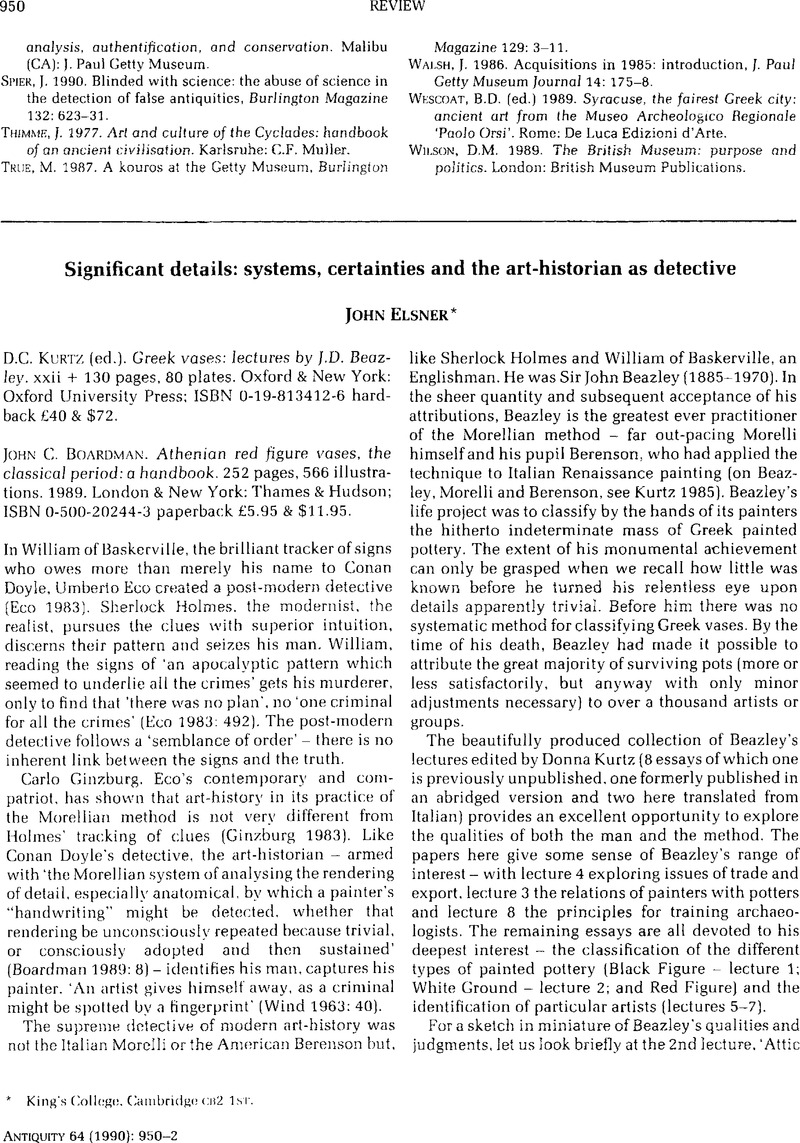Crossref Citations
This article has been cited by the following publications. This list is generated based on data provided by Crossref.
Gill, David
1993.
Art and vases vs. craft and pots.
Antiquity,
Vol. 67,
Issue. 255,
p.
452.
Gill, David
1996.
Connoisseurship in context.
Antiquity,
Vol. 70,
Issue. 270,
p.
988.
Whitley, James
1997.
Beazley as theorist.
Antiquity,
Vol. 71,
Issue. 271,
p.
40.
Kotoula, Dimitra
2004.
‘Maniera Cypria’ and thirteenth century icon production on the island of Cyprus: a critical approach.
Byzantine and Modern Greek Studies,
Vol. 28,
Issue. ,
p.
89.
Squire, Michael
2015.
A Companion to Ancient Aesthetics.
p.
307.
Papadopoulos, John K.
2015.
The Charitonidis Class: A group of large Athenian Late Protogeometric skyphoi.
Opuscula. Annual of the Swedish Institutes at Athens and Rome,
Vol. 8,
Issue. ,
p.
7.
Squire, Michael
2015.
A Companion to Roman Art.
p.
172.
Jones, Nathaniel B.
2019.
Truth from fiction.
Res: Anthropology and aesthetics,
Vol. 71-72,
Issue. ,
p.
229.
Driscoll, Eric
2019.
Dossier. Corps antiques : morceaux choisis.
p.
101.



